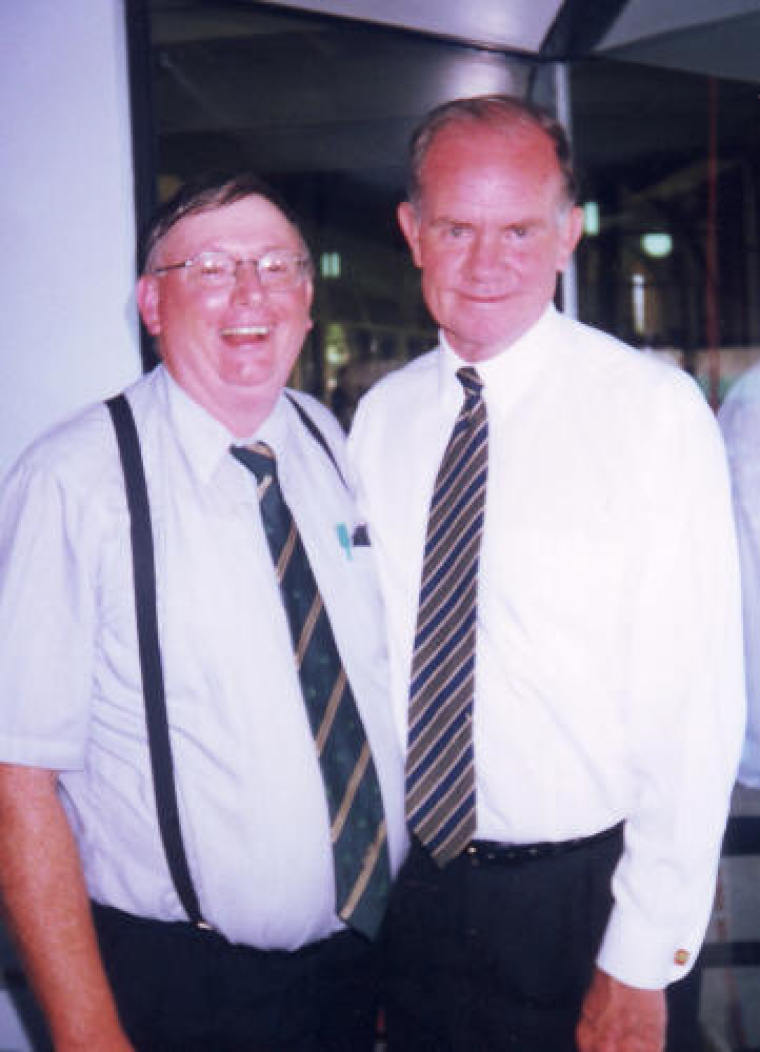
In those years as the Australian Cricket Team chaplain he saw five generations of cricketers come through the Australian cricket team system, in an era after the World Series Cricket and before this new cricket revolution of Twenty/20.
In his era as Chaplain to the Australian XI the captains were Kim Hughes, Allan Border, Mark Taylor and Steve Waugh. In this role he was interviewed by numerous media outlets including television, radio and newsprint.
The fourth article in this series, M V Tronson discusses cricket tours and what the chaplain engages in when travelling.
It is very important to understand, M V Tronson explained, that the chaplain was never a part of the official touring party and this was the case with cricket for several reasons.
First, the cricket chaplaincy model that was introduced came through the InterChurch Trade and Industry Mission (ITIM) in 1982. M V Tronson was an industrial chaplain and sought good-will from ITIM and his own Baptist Denomination to attend an International Sports Ministry Congress held in Hong Kong in that year.
Having returned, M V Tronson submitted official reports to both ITIM and his Baptist Denomination which initiated the Sports and Leisure Ministry with the Australian Cricket Board being the first Australian professional sport adopting the ministry in 1984.
In the ITIM model, the industrial chaplain retains independence from the management. Persons employed by the company must feel confident in that, what they say in private to the Industrial Chaplain, does not get back to the Management.
Therefore, this independence was established as a core value for the Cricket Ministry, and that any travel or accommodation the Cricket Chaplain undertook was arranged by the Chaplain and was separate from the Australian cricket group travel.
When therefore M V Tronson travelled in his Cricket Ministry, he needed to raise the monies to pay for the travel and the accommodation regardless of whether that meant overseas travel or the domestic Summer of Cricket.
How M V Tronson arranged this was two fold. First, he sought from his faith financial supporters the funding required for such extensive travel and accommodation costs. It was often inappropriate to stay with family, friends or associates as the Cricket Ministry functioned all hours.
Secondly, he would pre arrange as many speaking engagements as possible when on tour - at men's breakfasts or dinners, churches, youth groups, universities, schools …
This served a three fold purpose. First, the speaking opportunities promoted the Sports and Leisure Ministry, Second it gave opportunity to add names to the monthly mailing list for future resources, and Thirdly, it was ideal for youth evangelism.
In the seventeen years M V Tronson served as the Australian Cricket Team chaplain his preaching bore fruit on innumerable occasions to the point where sports writer Ron Ross exclaimed that those names are recorded in Heaven.
He travelled extensively internationally in those seventeen years including Ashes tours and the most memorable was to New Zealand in March 2000 where he had a significant speaking tour to New Zealand universities.
But it was the home tours where much fruit was borne for as he travelled the nation's capital cities and spoke at as many functions as he could possibly fit within his tight schedules.
Even today, ten years on, since he moved sideways to Life After Cricket, in many cases well over 20 years ago, so many people tell him they remember his visit to their church, men's breakfast /dinner or youth rally or whatever it was. This has been a wonderful aspect of his 26 years of cricket ministry.
To give one particular situation, a woman stopped Mark and Delma Tronson at the doors on the Bible Society in Perth, Western Australia during the Cricket one summer in the early 1990's and said that their three teenage sons heard him preach on the previous Sunday.
The three teenagers had thought about what was said in that following week, and later that week, each gave their lives to Jesus Christ. This has occurred over and over again.